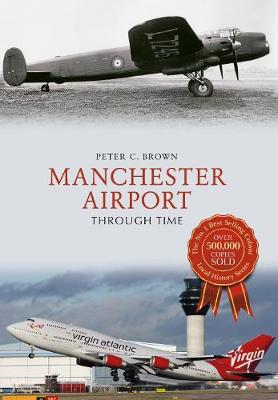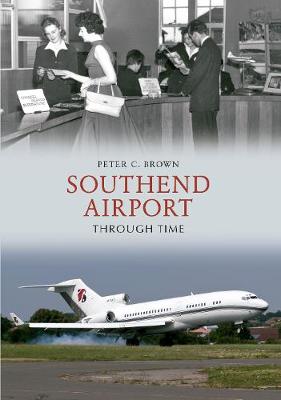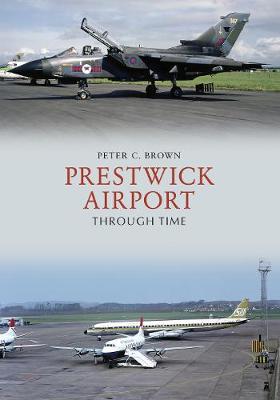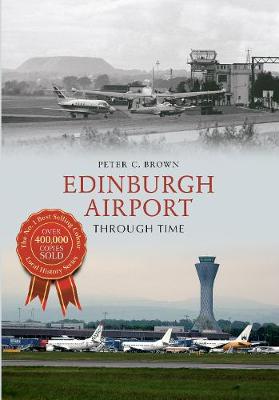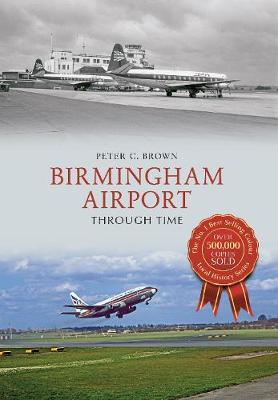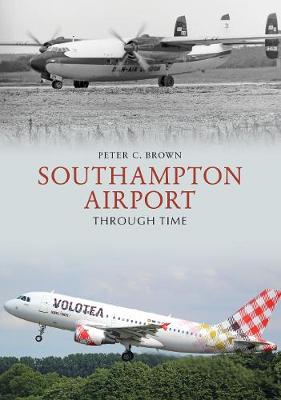Through Time
6 total works
Manchester Airport (EGCC) is a Category 10 international passenger airport located in Lancashire, UK, comprising three passenger terminals and a world freight terminal. It operates long-haul and short-haul flights to around 225 destinations worldwide. It is one of the largest centres of employment in the north-west of England, with more than 19,000 people directly employed on site, and supporting a further 42,500 jobs in the area. It is the fourth busiest airport in England, and is the only British airport other than London’s Heathrow Airport to operate two full-length parallel runways. In 2013, Manchester recorded a passenger rate of 20.8 million, with the capacity to manage millions more.
More than a million people a year visit the airport’s Runway Visitor Park, which is home to the retired Concorde (G-BOAC), as well as a Monarch Airlines DC-10, a BEA Hawker Siddeley Trident 3B and an Avro 146-RJX – the last civil airliner to be fully built in the UK.
In this book, Peter C. Brown explores the history of Manchester Airport, using a range of period and contemporary images.
More than a million people a year visit the airport’s Runway Visitor Park, which is home to the retired Concorde (G-BOAC), as well as a Monarch Airlines DC-10, a BEA Hawker Siddeley Trident 3B and an Avro 146-RJX – the last civil airliner to be fully built in the UK.
In this book, Peter C. Brown explores the history of Manchester Airport, using a range of period and contemporary images.
Southend Airport, one of the six main airports serving London, began life as a landing strip for pleasure flying. The largest flying ground in Essex, it was established by the Royal Flying Corps during the First World War as part of London's air defence network. During the Second World War, the RAF requisitioned the airfield and it served as a Spitfire base during the Battle of Britain and was an important fighter station for the rest of the war. Southend's potential as a gateway to Europe was finally realised with the construction of two runways during the 1950s. During the 1960s, it was one of the busiest airports in the country and home to some of the most innovative aircraft designs of the time. An increase in the length of the runways and in the number of services operated mean that Southend will continue as a gateway to Europe into the twenty-first century.
Prestwick Airport is a major international freight hub and is the only airport in Scotland to be connected by rail. It also has the second-longest runway in Scotland, accommodating all types of aircraft with no requirement for future extension. Prestwick sits in third place after Glasgow International and Edinburgh Airports in passenger traffic terms, and in 2016 was selected to become one of Europe’s first spaceports.
Its aviation history began in 1913 when it was developed as a pilot training airfield for the Royal Flying Corps, and during the Second World War it was involved in fitting and maintaining military aircraft delivered from the USA. Post-war, it retained a military role, building STOL (short takeoff and landing) utility aircraft, while a civilian airport grew alongside to accommodate commercial air travel. Prestwick quickly achieved the status of the transatlantic gateway to Scotland, prompting major expansion work in the 1960s to keep pace with the rising number of passengers.
Its aviation history began in 1913 when it was developed as a pilot training airfield for the Royal Flying Corps, and during the Second World War it was involved in fitting and maintaining military aircraft delivered from the USA. Post-war, it retained a military role, building STOL (short takeoff and landing) utility aircraft, while a civilian airport grew alongside to accommodate commercial air travel. Prestwick quickly achieved the status of the transatlantic gateway to Scotland, prompting major expansion work in the 1960s to keep pace with the rising number of passengers.
The land around Turnhouse Farm was converted to a military airfield in 1916 following a Zeppelin attack on Edinburgh. Known as RAF Turnhouse after 1918, the site served as a base for fighter squadrons defending Edinburgh and the Firth of Forth. Edinburgh Corporation first expressed interest in February 1944 in operating civilian flights from Turnhouse after the war and in 1946 British European scheduled the first flight between Edinburgh and London. Turnhouse officially opened as a civil airport in 1949 but the site was not fully demilitarised until 1960. Passenger numbers began to increase and in 1976 a new runway was built. Between 1983 and 1984 passenger numbers at Edinburgh exceeded 1 million; for the twelve months to November 2007, they exceeded 9 million. In this book, Peter C. Brown tells the story of Edinburgh Airport using a collection of period and modern images.
Birmingham Airport has a history stretching back to the Second World War, when it was requisitioned for use by the military. During the post-war years, races and public events were held at the site and it grew steadily throughout the remaining years of the twentieth century. By the mid-1970s, Birmingham Airport was handling over a million passengers and, in May 1984, the main terminal was opened by the Queen, with capacity for 3 million passengers, giving opportunity for more routes and an increase in passengers using Birmingham Airport. After the West Midlands County Council was abolished in 1986, ownership of the airport was transferred to a joint committee of the seven West Midlands District Councils.
The old terminal at Elmdon has been turned over to cargo, and the old terminal building protected with 'Listed' status. On 20 October 2003, Concorde made her final visit to Birmingham Airport as part of her farewell tour. In July 2007, Birmingham was voted the best airport in Europe in the 5 million to 10 million passengers per year category, and it continues to go from strength to strength. In this book Peter C. Brown explores the history of Birmingham Airport, using a range of period and contemporary images.
The old terminal at Elmdon has been turned over to cargo, and the old terminal building protected with 'Listed' status. On 20 October 2003, Concorde made her final visit to Birmingham Airport as part of her farewell tour. In July 2007, Birmingham was voted the best airport in Europe in the 5 million to 10 million passengers per year category, and it continues to go from strength to strength. In this book Peter C. Brown explores the history of Birmingham Airport, using a range of period and contemporary images.
Southampton Airport boasts a long history, with the first aircraft taking off from the original site at Stoneham Farm in 1910. Requisitioned by the War Office in 1917 as an aircraft assembly area, it was given to the US Navy to develop. The current airport was established in 1932, and was the test bed for R. J. Mitchell's prototype Spitfire.
The airport was commissioned as HMS Raven in 1939, and subsequently spent most of the war in service with the Royal Navy. Regular air services returned in 1945, and by the early 1950s Southampton was one of the busiest airports outside of London. Despite the nationwide slump in air passenger traffic during the 1970s, huge investment was made by its owners Airports UK Ltd, and a decade later it was purchased by the British Airports Authority. Currently owned by Heathrow Airport Holdings, it is steadily climbing the ranks of the UK's busiest airports.
The airport was commissioned as HMS Raven in 1939, and subsequently spent most of the war in service with the Royal Navy. Regular air services returned in 1945, and by the early 1950s Southampton was one of the busiest airports outside of London. Despite the nationwide slump in air passenger traffic during the 1970s, huge investment was made by its owners Airports UK Ltd, and a decade later it was purchased by the British Airports Authority. Currently owned by Heathrow Airport Holdings, it is steadily climbing the ranks of the UK's busiest airports.
